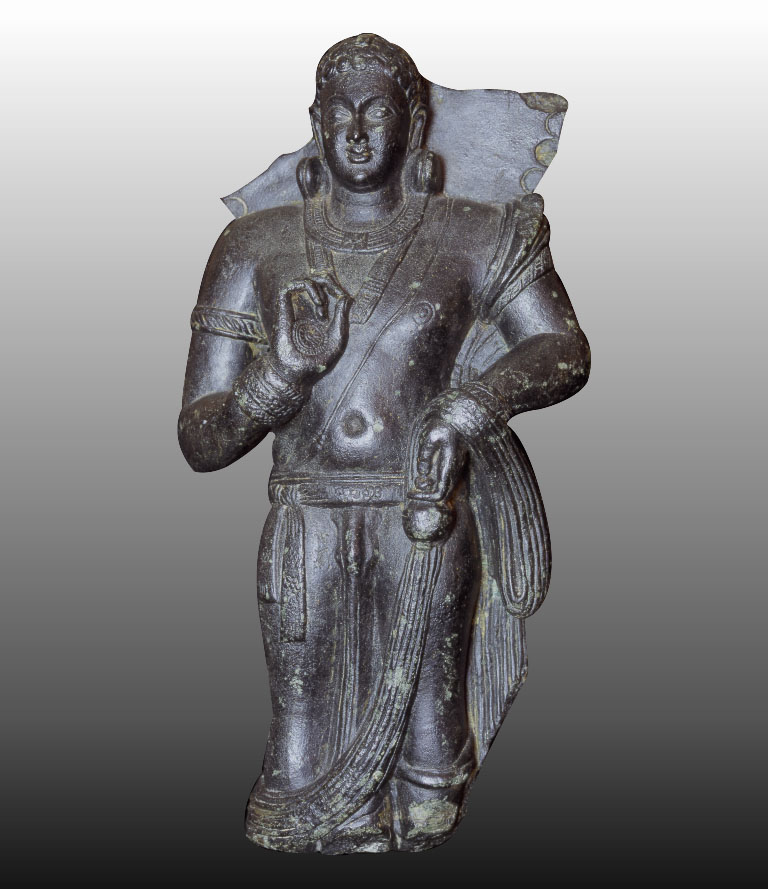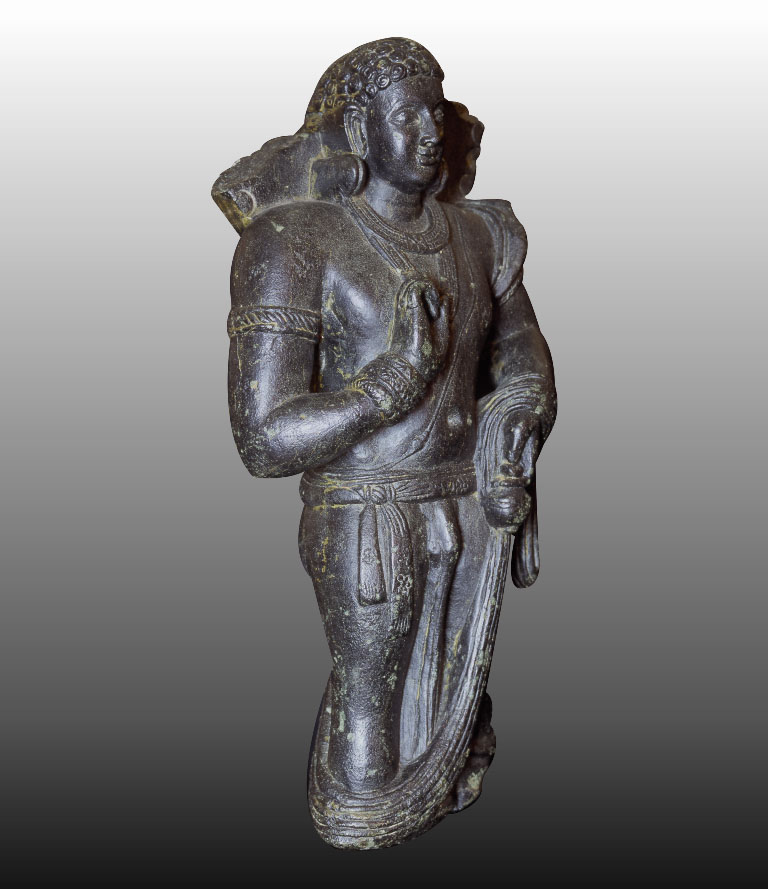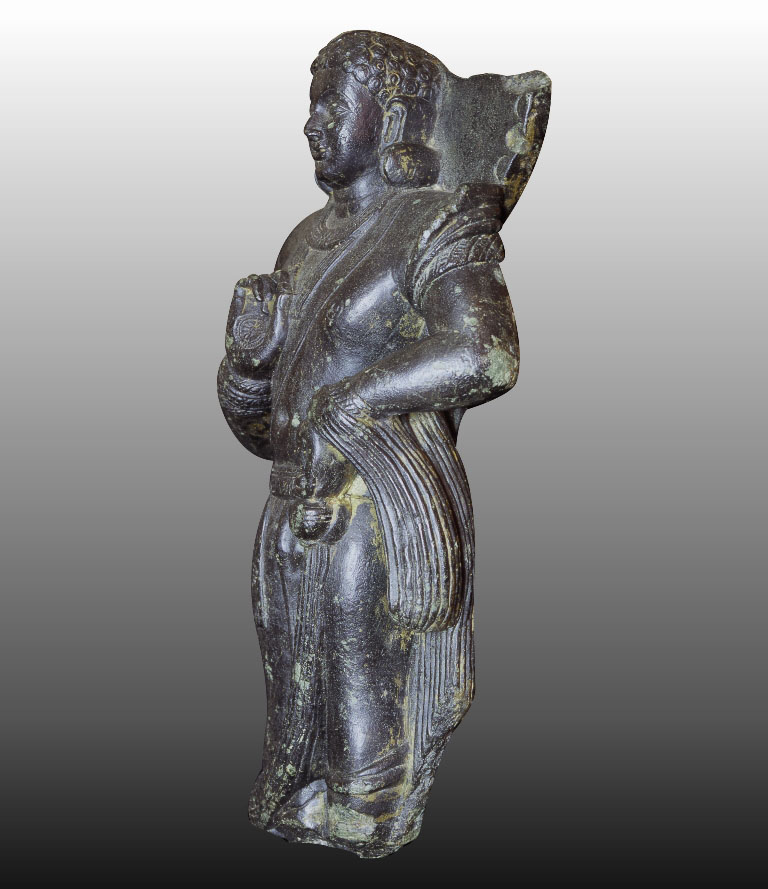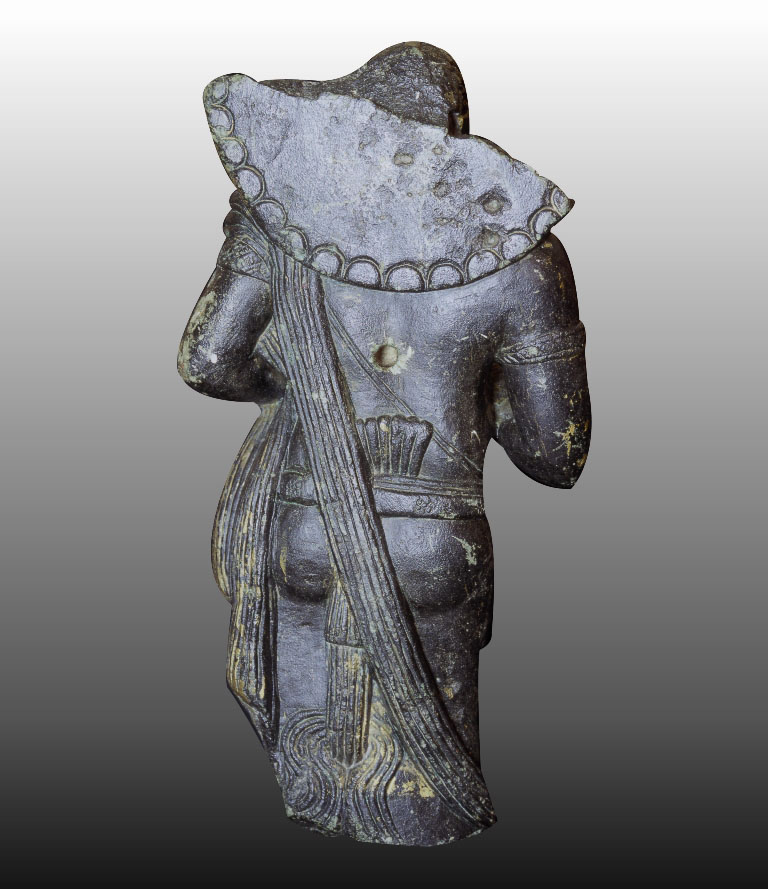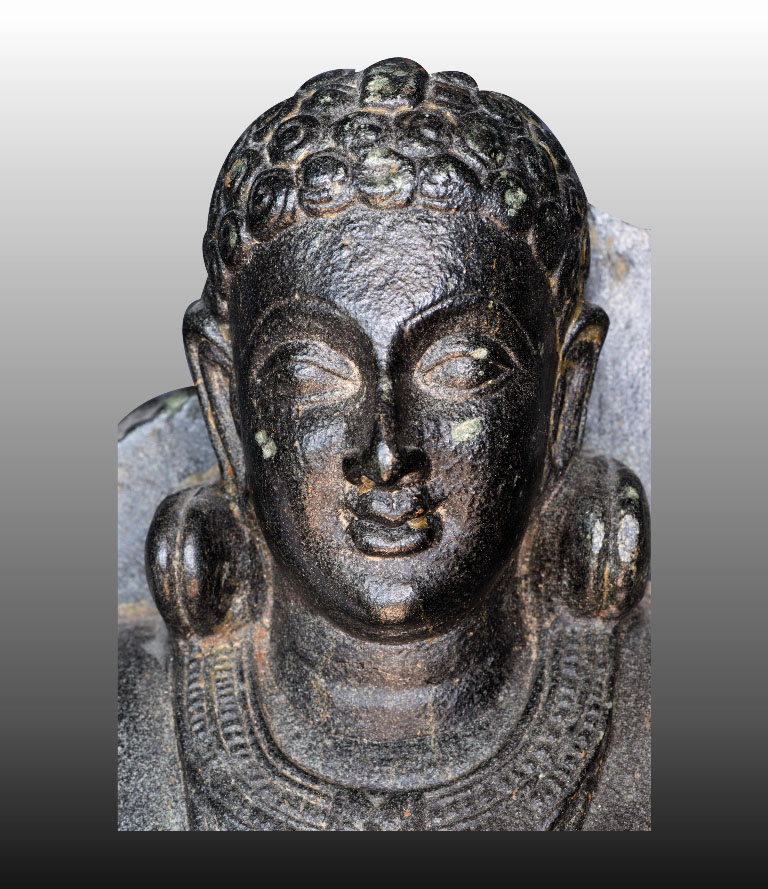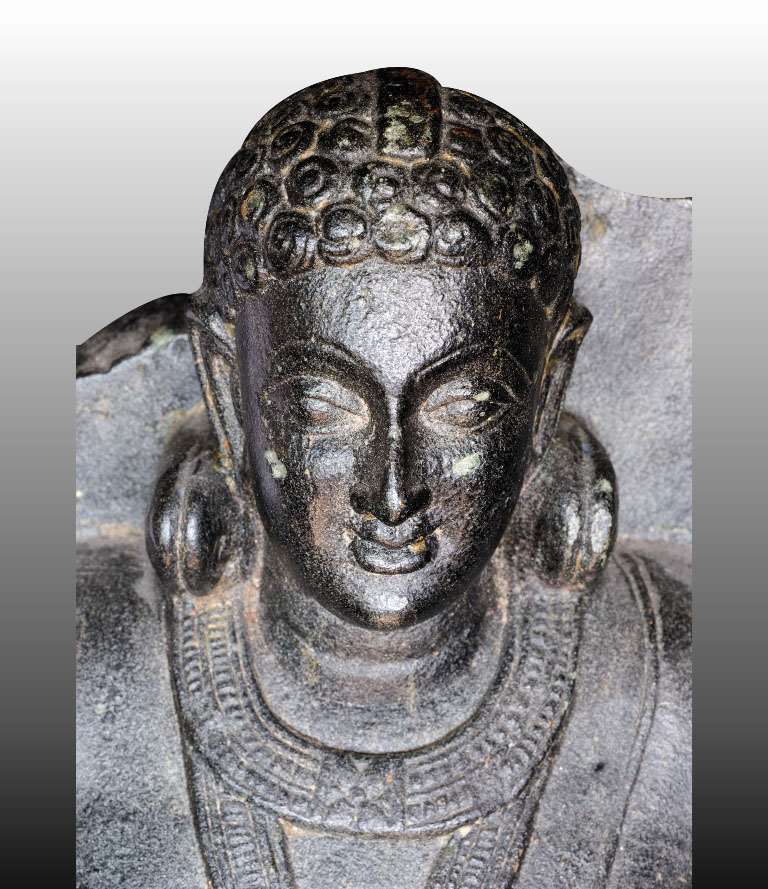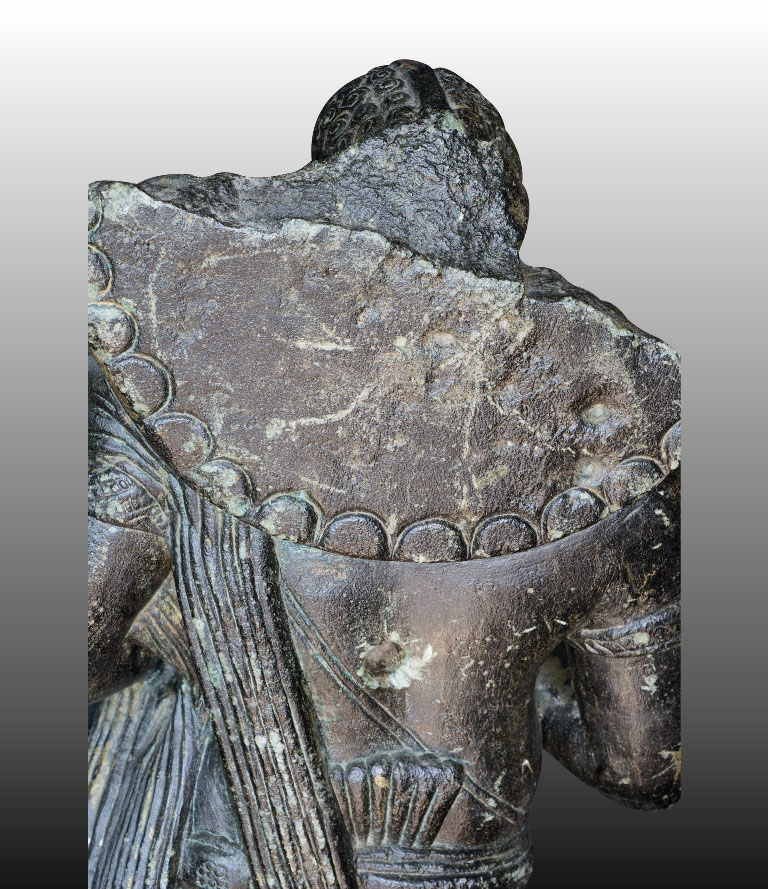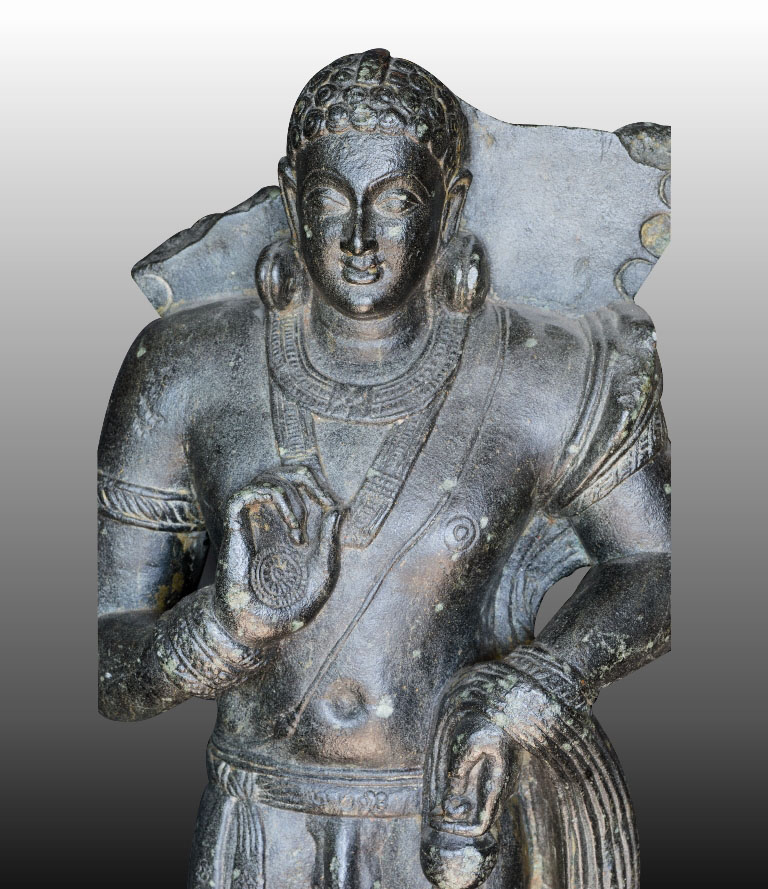MaitreyaUttar Pradesh, India - Chlorite - Height 46 x 26 x 12 cm - Kushâna period (circa 2nd century)The Bodhisattva Maitreya (“The Loving One”) is wor- shipped by all Buddhist schools as he is considered to be the coming Buddha. He can be depicted in various forms and different positions both as a Bodhisattva and as Buddha, appearing to combine both in this particular image. The curls of the hair in this statue resemble sea- shells and are a characterizing feature in images of the Buddha ascribable to the school of Mathurâ, possibly indicating Maitreya’s forthcoming attainment of the state of Buddhahood. The fact that there is no turban or diadem may also be considered a sign of his nature of Buddha, whilst his garment and jewels are part of the Bo- dhisattva’s typical attire. The ewer containing lustral wa- ter is the main attribute by which it is possible to identify this image as Maitreya. The style in which this image has been produced, with a full, fleshy body covered in a tight-fitting garment and a long pleated drape worn over his shoulder, is typical of the artistic production of the school of Mathurâ, in northern India. Other elements ascribable to this style are the frontal position and the way in which the halo is crafted, featuring grooves which are identical to those to be found in other sculptures from the Kushâna period, coming from both Mathurâ and other locations.
ALC (Free Circulation) |
